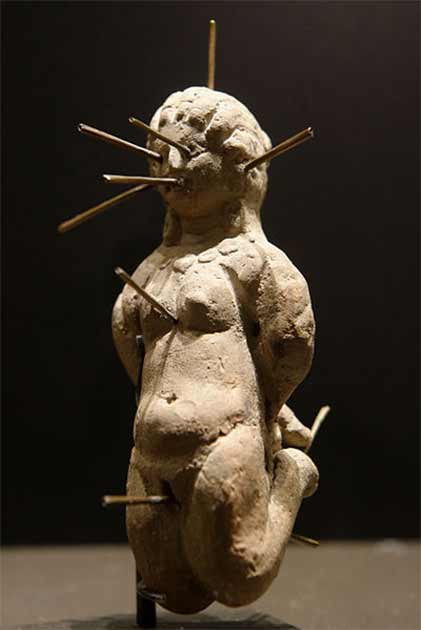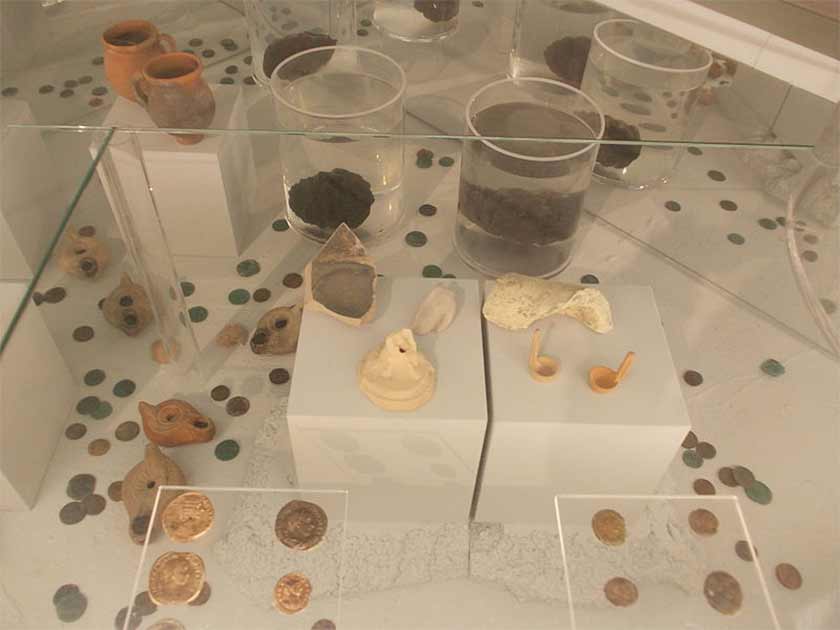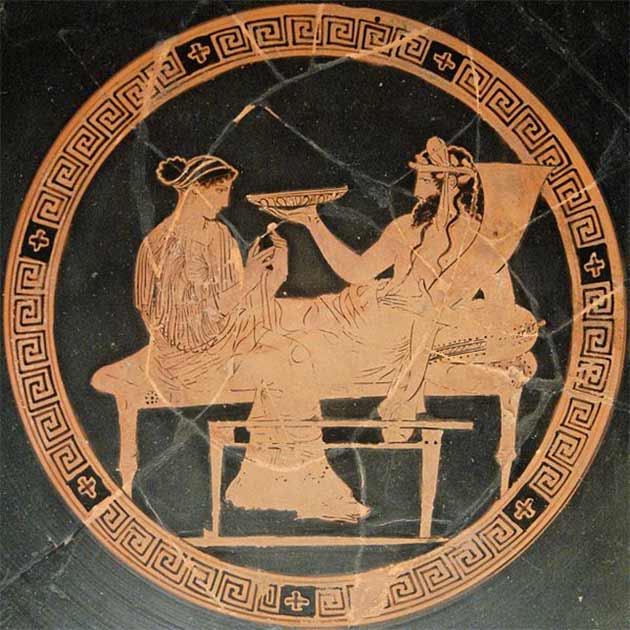One of the most constant characteristics in human nature is seeking justice for oneself and for the people around you. Irrespective of whether a person dies in front of you, or a person who left you in a relationship, if you are left feeling wronged you will want revenge. But, there will always be injustices where the laws of the time do not offer redress.
Different societies have addressed this problem in different ways. One of the more colorful was the use of curse tablets in ancient Greece and Rome. For these peoples, curse tablets both directly attacked the perceived wrong, but also highlighted problems in the legal systems which could then be resolved. These tablets were addressed to the pagan gods or spirits of the underworld, and were believed to carry real power.
What is a Curse Tablet?
A curse tablet is simply that: a small tablet with some form of curse written on it. The tablets typically asked the gods and the spirits of the dead to perform specific actions on an object or a person. Another common variant was a tablet used for compelling the cursed subject, usually to compensate the tablet’s owner in some way.
They were typically very thin sheets made out of lead, over which the texts are written in a scratched form, in tiny letters. Once written, there were folded, pierced with nails, or rolled into a tube. The curse tablets were then placed under the ground, especially underneath buried tombs or graves. If not that, then they were thrown into the pools or wells, or nailed to temple walls.

The language used in curse tablets often included a plea for justice. They would typically either list the crimes of the target in detail, or otherwise seek to hand over the responsibility for the punishment for those crimes to the god being addressed.
For the Romans, these curse tablets were often standard documents, written and prepared in advance. A space was left to fill the name of the target, as per the person’s desire. The tablet was designed to be used alongside spoken elements or binding gestures, necessary to complete the cursing ritual.
The wording of such tablets almost always addresses the gods of the underworld, that include Hecate, Persephone, Charon, and Pluto. But in some of the tablets the text does not summon the god, but instead focusses instead solely on the target of the curse.
Indeed, some curse tablets consisted of nothing but a list of names, who are the probable targets. In such cases where the tablet contains no spell, it is assumed that the rituals and words spoken over the tablet instead contain the spell, which is then applied to these names.
Love Spells and Funerals
Curse tablets were also used in the form of love spells, placed within the home of the object of desire. These curse tablets have mostly been discovered alongside figurines or dolls. The figurines or dolls are most likely the targets of the tablets, and generally were depicted with their hands and legs tied.

Apart from that, the curse tablets also had hair strands in a small piece of cloth, most probably the hair of the target. Such curse tablets appear to be a form of love spells, ones that demand the use of a hair strand of the desired target. It is said that the hair strands are wrapped around the curse tablet to bind themselves to the love spell.
But not all such tablets were designed to compel or harm living targets. At times, the curse tablets are also used for helping the dead to rest in peace. Those who died young, or faced a violent death, sometimes had tablets buried by their families underneath their graves to ensure that their souls would rest in peace.
What Do We Know?
Christopher A. Faraone, Professor of Classics at the University of Chicago, Illinois, states that most of the curse tablets that were discovered to date are usually the binding spells, designed to restrict or compel the targets. Some curse tablets which have been discovered were associated with lawsuits, to prevent someone from testifying against them or otherwise winning the case.
In most of the other discoveries, the curse tablets were buried with the dead in their graves. These were assumed to be sent with the dead to the underworld, where the wishes in the text would be carried out.

Jutta Stroszeck, from the German Archaeological Institute, is the leader of archaeological digs in the remote Ancient Greek grave sites in Athens. She has found many curse tablets in these sites, dated from the 4th Century BC. These tablets have been traced to the legal legislation of Demetrius of Phalerum. Demetrius was a Greek leader who ruled Athens for around ten years between 317 and 307 BC.
The legislation introduced by Demetrius included new laws that affected the cemetery. These laws stated that people were not permitted to place curse tablets upon tombs. As a result, the Athenians were forced to look for other innovative ways of sending their curses to the dead.
A Clever Solution
The researchers discovered around 30 tablets that showed how the populace got around these new laws. Instead of placing the tablets in tombs, the residents deposited them in a well that was situated near the graves. Both the Greeks and later the Romans believed that drinking water was sacred, and wells could be a direct route to the gods of the underworld. They also believed that the underworld was guarded by nymphs, for which gifts and vessels were scattered in offering to maintain harmony and peace.
Curse tablets did not strictly require water sources, but this became the preferred way of depositing them. The texts of tablets also often contained references to water, asking that the person’s body or heart be turned to liquid and carried to the underworld. In this way, the target of the tablet could reach their desired destination.
The Romans later used their aqueducts in a similar manner to the Greek wells, to transport the curse to the underworld. They also innovated in their approach, as discoveries in Rome have shown. In the city, near the modern day Euclide Metro Station, excavations under a parking garage revealed an ancient fountain.
The words “Anna Perenna” were found on the fountain. Given the location next to the 1st milestone of the Via Flaminia, this is thought to be a variation of the name of the sister of unlucky Dido, Queen of Carthage. For Romans the fountain of Anna Perenna became an ideal location for both curse tablets, as well as prayers.

The dedications and prayers were believed to take place right in front of the fountain, while curse tablets were placed in the dark cistern behind the fountain. These were wrapped around lamps in the cistern chamber, combining the natural elements of fire and water.
The researchers also found dolls encased in lead, potentially effigies of the targets of the tablets used as part of the curse. All of the items that were discovered in and around the fountain were traced to be between the 6th and 4th century BC. Hence, one can conclude that this practice was an ongoing custom for centuries.
So How do You Make A Curse Tablet?
Curses were common across almost the entire Ancient Greek world. From lawyers to unfaithful lovers, almost anyone could be the target of a curse tablet. As mentioned previously they were often made of lead as it was easily available at the time, but wood or papyrus was also used.
Another reason for using lead was its durability. Lead is a highly unreactive metal and the ancients wanted their curses to endure. After all, “Revenge is a dish that is best served cold” and the heavy, dark and cold lead certainly seems to fit the bill!
The writings upon the curse tablets were mostly formulaic, but the organization and manufacturing of the curse tablets was not based upon any standardized practice or a uniform production. There is evidence the Romans did manufacture love spell curse tablets in bulk, with just the name of the target to be filled in. But for all other cases, the text and manufacture were completely customized, specific to the target of the curse.

A typical formula for the curse tablet would be as follows: first would come the target’s name, followed by the names of their father and mother. Following that, the relevant gods are called upon to ensure those names receive the curse. Then comes the crime or harm that the target has caused.
In case the curse is directed at an unknown person, perhaps a thief who has escaped detection, the phrase “whether man or woman, free or slave” would be used. In such cases the name of the person is obviously also omitted, and the gods are beseeched for revenge directly. The text would sometimes be customized further, with the owner of the tablet deciding the intensity of the curse they wished to cast.
Nice Little Earner
Back in that era, the people who possessed the materials required for making curse tablets could easily build a business and source of income out of it. Enterprising businessmen would set up a shop to beat the lead and craft out thin rectangular sheets, churning out many formulaic inscribed tablets for purchase.
It is not so uncommon these days to still invoke a deity and curse someone, and many such phrases endure in our speech. Many injustices are still outside of legal remedy, leaving the wronged unable to seek justice.
Love spells also endure, although these are much less common, and the emphasis has changed. For the ancients, if your love was unrequited and your heart broken, this was seen as a crime in which you were the victim. And so, through these curse tablets the Greeks and the Romans sought their redress, to punish those who they felt wronged them.
Top Image: Roman curse tablet targeted at “Rhodine”. Source: Baths of Diocletian / CC BY 2.5.
By Bipin Dimri